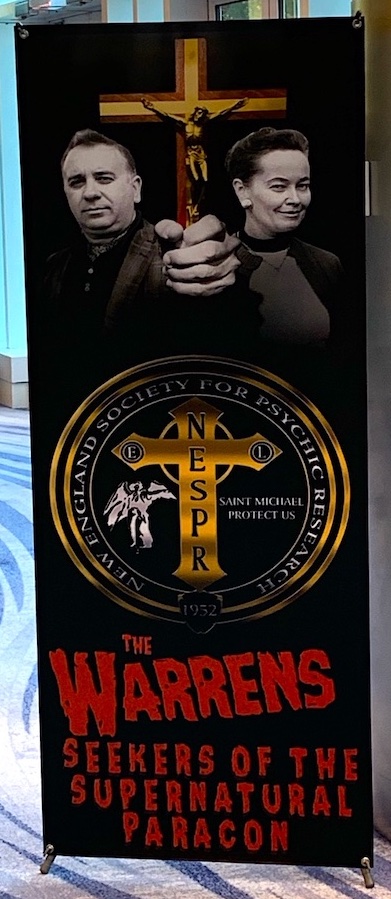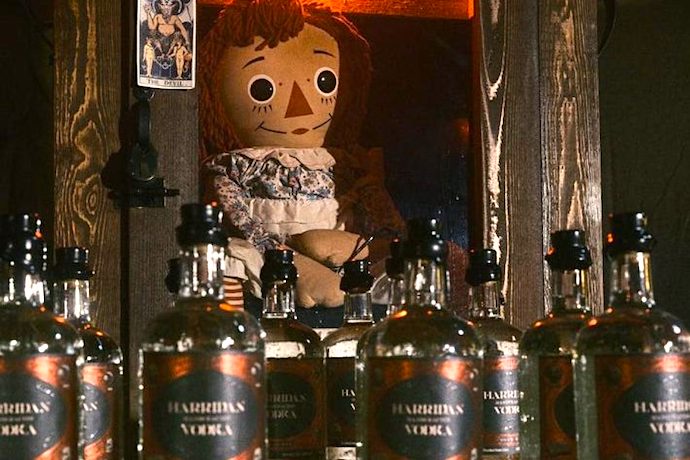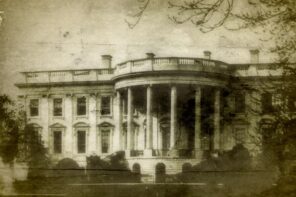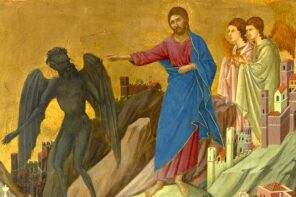I really didn’t know what to expect when Joseph Laycock and I bought our tickets for the New England Society for Psychic Research (NESPR) Seekers of the Supernatural Paracon as part of our research for our book The Exorcist Effect (named for a phenomenon we discussed in these pages after the release of Conjuring 3). I certainly didn’t expect the crowd.
The Paracon, held the weekend before Halloween, is based around the work of Ed and Lorraine Warren, the famous demon-hunting couple whose case files are the basis of the billion-dollar Conjuring series of films. Put on by Tony Spera, the son-in-law of Ed and Lorraine and current head of NESPR, the Paracon boasts the chance to see real haunted artifacts straight from the Warren’s now-closed Occult Museum. Joe and I jumped at the opportunity.
We enter the Mohegan Sun Casino in Uncasville, Connecticut, and follow the staggeringly long line as it snakes out the doors, into the Casino, past restaurants, conference rooms, and Native American-themed décor, finally ending just past the Michael Jordan Steakhouse. Convention goers continue to pile up behind us, all waiting for their chance to see the collection of Warren relics and to catch a rare glimpse of the main attraction, Annabelle, the supposedly demon-possessed Raggedy Anne doll who terrorized two nursing students and their roommate over a period of months in 1970. Although I can’t find an official number, a casino employee tells us over 5,000 tickets have been sold; 5,000 pilgrims who’ve made the trek from around the country to pay their respects to Annabelle, and are willing to wait hours to do so.
On the convention floor, an eclectic group of vendors hocks their wares, from Ouija boards and books about ghost hunting to bath bombs shaped like horror movie icons. There are psychics, Tarot card readers, a shaman reading bones, and a ghost-hunting professional wrestler, right alongside various exorcists, including a self-proclaimed archbishop and a reiki-practicing nun. Any and all spiritual beliefs seem to be welcome, even though Ed Warren constantly warns about the dangers of meddling with “the occult.”
 According to Ed, demon possession doesn’t just happen, it has to be invited. This happens in what he calls the first stage of possession, or Encroachment: “First occurs the encroachment—or permission—stage, where a negative spirit is given access to a human being through either voluntary means (satanic rituals) or involuntary means (curses).” Those voluntary means include things like visiting a psychic, playing with a Ouija board, or otherwise “dabbling in the occult.”
According to Ed, demon possession doesn’t just happen, it has to be invited. This happens in what he calls the first stage of possession, or Encroachment: “First occurs the encroachment—or permission—stage, where a negative spirit is given access to a human being through either voluntary means (satanic rituals) or involuntary means (curses).” Those voluntary means include things like visiting a psychic, playing with a Ouija board, or otherwise “dabbling in the occult.”
The cult surrounding Annabelle represents perhaps the biggest example of this paradox: a demon-possessed doll so dangerous it’s locked in a glass case with a sign that reads “Warning Positively Do Not Open,” yet here it sits in a casino ballroom before 5,000 fans and potential possession victims. The crowd around Annabelle is huge, so I snap a quick selfie with the doll, and Joe and I continue on our way.
There are other objects in the Warren Museum exhibit, including a skull used in “Satanic rituals,” the “Necromonicin” (a ridiculous misspelling of Necronomicon that somehow made it onto the object’s description card), clothing that the Warrens themselves supposedly wore, and even some other demonic dolls. But Annabelle—the subject of three horror films—is the queen of the exhibit and the one object everyone has to not only see but get a picture with. Similar to the Hindu concept of darsan, Paracon-goers want not only to see Annabelle, but to be seen by her.
Organizer Tony Spera, seems unbothered by any potential demonic hazard that displaying Annabelle may have created. In fact, Spera facilitates possibly the strangest item for sale on the convention floor: Harridan Vodka Paranormal Reserve—a bottle of vodka that’s been aged next to the Annabelle doll in the Warren’s Occult Museum. A limited run of 666 (of course) bottles have been produced. Each comes with “gloves for handling and protection, an authenticity card, as well as a bespoke wooden case.” The case lid even functions as a Ouija board and a Ouija planchette is included. (The Warrens taught that Oujia boards were a sure-fire way to attract demons.) The whole package costs $199 and can be shipped to your home.
Vodka, of course, doesn’t need to be aged. So the appeal of this product seems to be the opportunity to drink some of Annabelle’s spirit—almost as a sort of communion with the legend. It is, quite literally, “commodity fetishism.”
What would the Warrens, both of whom have passed, think of all this? It’s impossible to know for certain (at least without a high-quality Ouija board). But the Warrens would probably not have been bothered by this strange conflation of Catholic traditionalism and occult paraphernalia. Despite the Warrens’ constant warnings of the dangers of the occult, they often seemed to contradict their own advice. Lorraine believed she could read auras, see into the past and future, and once said she experienced a psychic connection to Bigfoot! Likewise, Ed discussed such topics as reincarnation and aura-cleansing in his lectures.
We also know from the “lived religion” approach to religious studies that strange and seemingly paradoxical bricolages of beliefs and practices are often the norm, rather than the exception. Religion scholar Thomas Tweed suggested that religions aren’t “self-contained traditions, chugging along parallel tracks” but rather “a flowing together of currents—some enforced as ‘orthodox’ by institutions—traversing multiple fields, where other religions, other transverse confluences, also cross, thereby creating new spiritual streams.”
This certainly describes the Paracon—a crossing place in which unlikely streams blend together.
As for putting Annabelle on display, the Warrens always assumed battling demons was compatible with entertainment. Ed said of his museum of diabolical objects, “most of the museum’s collection has been used for the diabolical with dire effects … leaving people maimed, insane, or dead. Some of these artifacts are still dangerous.” Yet he was still happy to sell tickets. The Warrens often justified horror movies and other forms of diabolical entertainment by claiming they help people to accept the reality of the devil. At any rate, the Warrens would probably be proud of their Paracon—especially the ticket sales.





